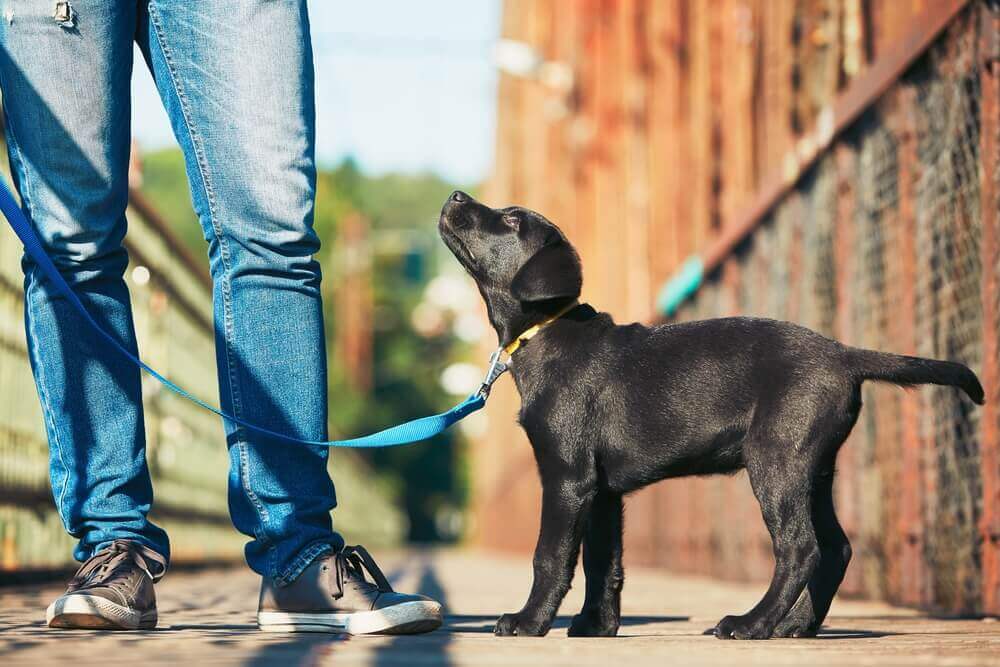How Much Exercise Does Your Pup Need?
PIA Australia
August 10, 2017
How often should you exercise your new puppy? Nadia Crighton investigates exercising your dog in a three-part special.
The most important thing when considering how much exercise your new puppy needs, is to understand your chosen breed. Large breeds need extra care when exercising to ensure they don’t damage their fast-growing joints. That can lead to irreparable problems later down the track.
There is a fine line when deciding on the right amount of exercise. Most will advise up to five minutes per month of life. However, it’s best to go on what your pup is telling you. Little pups are pretty good at letting you know when it’s shut-eye time and tend to have ‘bursts’ of energy followed by sleep. When your puppy does show signs of being tired, it is crucial that you do not push them to continue.
The Early Days
In the early days and weeks of your new pup’s life, exercise will be in the form of play. You will notice pretty quickly that your new pup likes to bound along and grab anything in sight to flick about. When playing with your new pup there are some things to consider;
- Soft toys are best. Drag them across the floor to entice play instead of throwing and encouraging jumping.
- Do not play tug-o-war with your new puppy. It puts a huge amount of strain on your pup’s neck. Allow them to tug, but do not pull back and keep the toy close to the ground.
- Go at their pace, if they want to rest and sleep, let them. Have a puppy area that they can retreat to for a good old shut-eye without being disturbed. Crates and pens work wonderfully for this and you will find that your pup will seek this ‘quiet’ area out when they have had enough.
- Enrol in a puppy-preschool so your pup can play safely with other pups. Great for socialisation and getting them ready for their ‘big dog training’.
- SLEEP – puppies need lots and lots of sleep. This helps them to grow and ensures that they have a sound temperament.
Older Pups
When your pup is fully vaccinated you can move onto more advanced exercise and training. Remember that you can train your pup to walk nicely on a lead at home, or in a ‘safe’ area like a friend’s home (make sure their dog is fully vaccinated). There is a fine line between keeping your pup safe, but ensuring they have enough socialisation in the first 16 weeks of their life to prevent many behavioural problems. Puppy preschools and safe areas can help. So, take your puppy to your friend’s homes and expose them to as many situations as possible, think cats, traffic, loud noises, vacuum cleaners, children screaming. The more they can see and smell with no fear, the more adjusted they will become.
When they reach 16 weeks, enrol in a basic obedience class. This is great for socialisation and also to teach your growing pup some basic manners. Around this age you can also start to walk your dog. Start slowly and go at your pup’s pace. Depending on the type of breed, older pups will need more, or less exercise. Remember, large breed dogs will need to take care during their high growth stages so pounding the pavement for hours is not recommended. As too is rough play with other dogs. So, if you are thinking of going to an off-leash area. Consider going during quieter times when your growing pup is less likely to get shoved around by curious hounds.
Training is a great way to flex not only your growing pup’s muscles but also their brains. Teaching your pup to walk nicely on a leash improves the bond you share and ensures that your ‘soon to be dog’ will be well-mannered and under control.
Other Tips
- Do not let young pups jump off high objects or walls
- Always check that pavements are not too hot
- Have water on hand

8 Comment